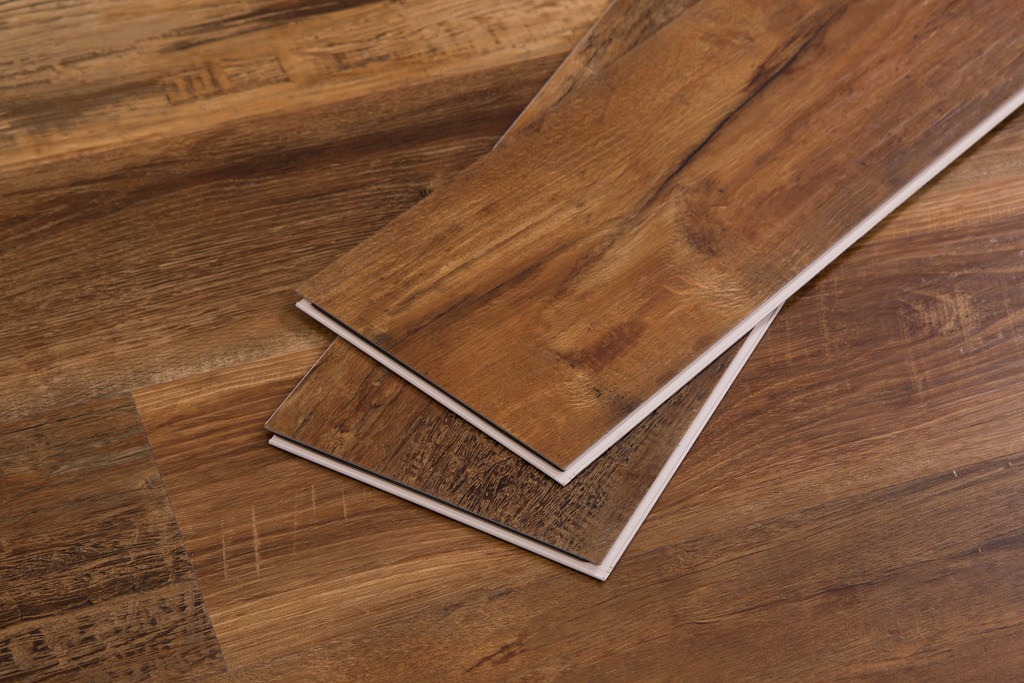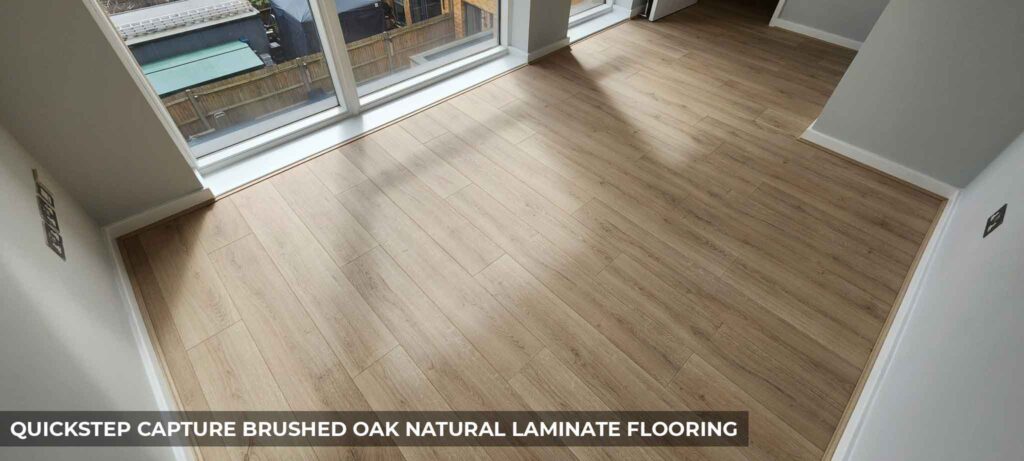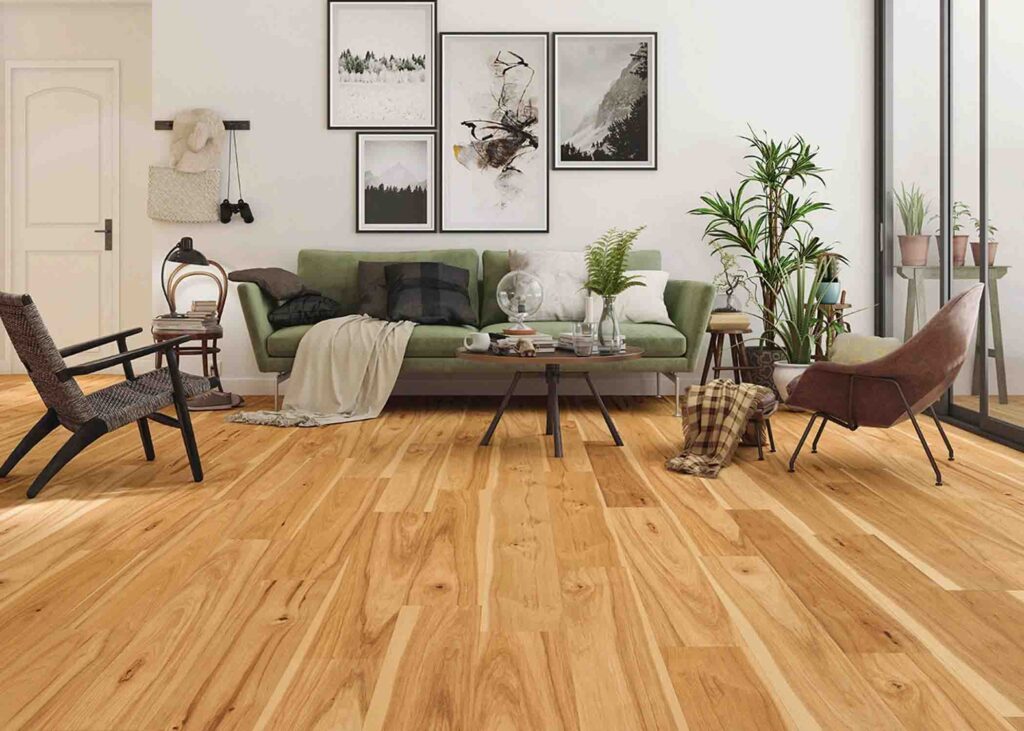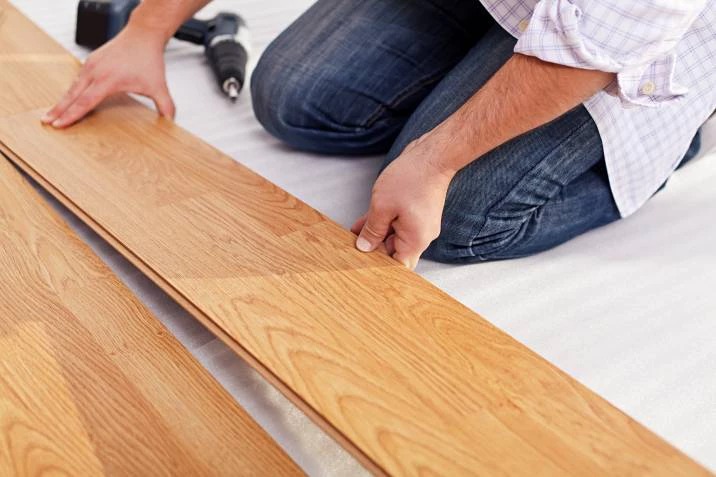Laminate flooring has surged in popularity over recent years, offering homeowners and businesses an affordable, stylish alternative to traditional wood floors. But a common question arises: Is laminate flooring actually wood or plastic? This question is more than just semantics—it’s crucial for understanding durability, maintenance, environmental impact, and overall value.
Laminate flooring is a composite product made primarily of wood-based fiberboard topped with a high-resolution photographic layer and a clear plastic wear layer. It is neither pure wood nor pure plastic but a hybrid that combines elements of both, delivering durability and aesthetic appeal at a lower cost than hardwood.
Imagine stepping into a room where the floor looks like natural oak but costs a fraction of real wood. You might wonder how manufacturers achieve such realistic wood visuals with materials that seem so different. Let’s dive into the composition, manufacturing, and qualities of laminate flooring to uncover the truth behind this popular flooring choice.
1.What is laminate flooring made of?

Laminate flooring is composed mainly of high-density fiberboard (HDF), a type of engineered wood product, combined with a photographic layer that mimics wood grain and topped by a transparent plastic wear layer for durability.
Understanding Laminate Flooring’s Composition
- Core Layer – Wood Fiberboard: The foundation of laminate flooring is HDF or medium-density fiberboard (MDF). These are wood by-products made from compressed wood fibers and resin, providing strength and stability.
- Decorative Layer – Photographic Print: A high-definition image layer simulates the appearance of real wood, stone, or other materials. Advanced printing technology ensures realistic textures and colors.
- Wear Layer – Plastic Resin Coating: A durable, transparent overlay made from melamine resin or aluminum oxide protects against scratches, stains, and wear. This plastic layer is crucial for laminate’s resistance to daily use.
- Backing Layer: Provides moisture resistance and stability to prevent warping.
A typical laminate plank might be 7-12mm thick, with about 6-8mm dedicated to the core HDF and the rest split between the decorative and wear layers.
From an ecological perspective, using HDF makes laminate a more resource-efficient option than solid hardwood, since it utilizes wood fibers from wood waste.
| Layer | Material/Description | Function | Typical Thickness (mm) |
|---|---|---|---|
| Core Layer | High-Density Fiberboard (HDF) or Medium-Density Fiberboard (MDF) made from compressed wood fibers and resin | Provides strength, stability, and structure | 6 – 8 |
| Decorative Layer | High-definition photographic print simulating wood, stone, or other materials | Creates realistic texture and appearance | Part of 1 – 2 |
| Wear Layer | Transparent plastic resin coating (melamine resin or aluminum oxide) | Protects against scratches, stains, and wear | Part of 1 – 2 |
| Backing Layer | Moisture-resistant backing material | Prevents warping and adds stability | Thin layer (varies) |
2.Is laminate flooring considered wood or plastic?

Laminate flooring is a hybrid product that contains both wood and plastic components; its core is wood-based fiberboard, while its surface wear layer is plastic, meaning it is neither purely wood nor purely plastic.
Classification and Industry Perspectives
- Wood Component: The core wood fiberboard classifies laminate as an engineered wood product rather than a natural hardwood.
- Plastic Component: The top wear layer consists of synthetic materials like melamine and aluminum oxide, giving laminate its scratch and moisture resistance.
- Hybrid Nature: This combination means laminate flooring offers advantages from both materials — the warmth and structural integrity of wood, plus the durability and low maintenance of plastic coatings.
- Market Positioning: Manufacturers market laminate as “wood look flooring,” distinct from both hardwood and vinyl, which is often fully plastic-based.
- Consumer Misconceptions: Many buyers confuse laminate with vinyl plank flooring, which is mostly plastic with a printed surface. Laminate’s wood-based core provides a firmer feel compared to the more flexible vinyl.
Understanding laminate as a composite helps consumers set realistic expectations about performance, lifespan, and care.
| Aspect | Description |
|---|---|
| Wood Component | Core is made of wood-based fiberboard, classifying laminate as an engineered wood product |
| Plastic Component | Surface wear layer made of synthetic materials like melamine resin and aluminum oxide |
| Hybrid Nature | Combines wood’s warmth and structural integrity with plastic’s durability and low maintenance |
| Market Positioning | Marketed as “wood look flooring,” distinct from hardwood and fully plastic vinyl flooring |
| Consumer Misconceptions | Often confused with vinyl plank flooring, but laminate has a firmer wood-fiber core versus flexible vinyl |
3.How does laminate flooring differ from hardwood and vinyl flooring?

Laminate flooring differs from hardwood by being less expensive, more moisture-resistant, and easier to install, while compared to vinyl, it has a firmer wood-fiber core but is generally less waterproof and more susceptible to water damage.
Key Differences Among Flooring Types
| Feature | Laminate Flooring | Hardwood Flooring | Vinyl Flooring |
|---|---|---|---|
| Core Material | Wood fiberboard (HDF) | Solid natural wood | Synthetic plastic (PVC) |
| Surface Appearance | Printed photographic layer | Natural wood grain | Printed layer, can mimic wood or stone |
| Durability | Scratch-resistant wear layer | Can dent and scratch easily | Highly waterproof, flexible |
| Water Resistance | Moderate, prone to swelling if wet | Low, sensitive to moisture | Excellent, suitable for wet areas |
| Installation | Click-lock floating floors | Nails or glue down | Click-lock or glue |
| Cost | Affordable | Expensive | Affordable to mid-range |
- Hardwood: Offers unmatched natural beauty and can be sanded and refinished multiple times but requires regular maintenance and is vulnerable to water damage.
- Vinyl: Extremely water-resistant and soft underfoot but often lacks the realistic wood feel and firmness of laminate or hardwood.
- Laminate: A middle ground offering realistic looks, moderate water resistance, and easy DIY installation, ideal for many residential and commercial spaces.
This helps consumers choose the right flooring type based on lifestyle, budget, and maintenance preferences.
4.Which types of laminate flooring offer the best durability and environmental benefits?

High-pressure laminate (HPL) with an aluminum oxide wear layer offers superior durability, while laminates made from sustainably sourced HDF and low-VOC adhesives provide better environmental performance.
Durability and Sustainability Factors
- Durability Enhancers:
- Wear Layer Thickness: Thicker wear layers (e.g., 0.5mm or more) improve scratch and impact resistance.
- Aluminum Oxide Coating: Widely used in quality laminate for enhanced abrasion resistance.
- Waterproof Core Technology: Some laminates feature waterproof cores that resist swelling and warping.
- Environmental Considerations:
- Sustainable Wood Sources: Look for certifications like FSC (Forest Stewardship Council) indicating responsibly harvested wood fibers.
- Low Emission Materials: Low-VOC resins and adhesives reduce indoor air pollution.
- Recyclability: Laminate is partially recyclable, but separation of layers is challenging.
- Innovations: Some brands now offer eco-friendly laminates using recycled materials or bio-based resins.
Durability Rating of Laminate Flooring Types
| Laminate Type | Wear Layer Thickness | Water Resistance | Eco Certification |
|---|---|---|---|
| Standard Laminate | 0.2 – 0.3 mm | Moderate | Varies |
| High-Pressure Laminate | 0.5 – 1.0 mm | High | FSC, GreenGuard Certified |
| Waterproof Laminate | 0.5 mm+ + waterproof core | Excellent | Some certified |
Choosing the right laminate balances durability with environmental responsibility.
5.Do laminate floors feel and look like real wood?

Thanks to advanced photographic printing and textured finishes, laminate floors can closely mimic the look and feel of real wood, but subtle differences remain in texture, warmth, and sound underfoot.
Realism in Appearance and Feel
- Visual Accuracy: Modern digital printing produces highly detailed wood grain patterns, knots, and color variations that rival natural hardwood.
- Surface Texture: Embossed finishes replicate the texture of wood grain, enhancing authenticity.
- Underfoot Feel: Because laminate uses fiberboard cores, it is firmer than vinyl but less warm than solid wood, sometimes producing a hollow sound without proper underlayment.
- Limitations: Laminate cannot replicate the unique variations and aging characteristics of real wood. Also, it does not have the natural warmth or ability to be refinished like hardwood.
- Installation Impact: Proper installation with quality underlayment improves comfort and sound dampening, bringing the feel closer to wood.
Consumers appreciate laminate’s realistic aesthetics at a fraction of hardwood’s price but should recognize subtle tactile differences.
| Aspect | Description |
|---|---|
| Visual Accuracy | Advanced digital printing creates detailed wood grain patterns, knots, and color variations |
| Surface Texture | Embossed finishes replicate natural wood grain texture for enhanced authenticity |
| Underfoot Feel | Firmer than vinyl due to fiberboard core but less warm than solid wood; may sound hollow without underlayment |
| Limitations | Cannot mimic unique wood aging, variations, or be refinished like real hardwood |
| Installation Impact | Proper installation with quality underlayment improves comfort and sound dampening |
6.How is laminate flooring manufactured, and what role do plastics play in this process?

Laminate flooring is manufactured by compressing wood fibers into high-density boards, applying a photographic print, and then coating it with a clear plastic resin layer that acts as a protective barrier.
Manufacturing Process and Plastic Components
- Wood Fiberboard Formation: Wood chips and fibers are mixed with resin binders and compressed under high pressure and heat to form dense, stable HDF boards.
- Decorative Layer Application: A photographic paper with the desired wood grain pattern is impregnated with melamine resin for durability, then bonded to the fiberboard core.
- Wear Layer Coating: A clear plastic resin, often melamine or aluminum oxide, is applied over the decorative layer to protect against scratches, moisture, and fading.
- Pressing and Curing: The layered assembly is subjected to high pressure and heat to fuse all layers into a single plank.
- Cutting and Profiling: Finished boards are cut to size with tongue-and-groove edges for easy installation.
Role of Plastics:
- The melamine resin wear layer is the primary plastic component, offering chemical and physical resistance.
- Plastic enhances the lifespan of laminate flooring by shielding it from abrasion, spills, and stains.
- Advances in resin technology continue to improve laminate’s durability and environmental profile.
This process exemplifies how laminate combines wood fiber’s structural benefits with plastic’s protective properties.
| Manufacturing Step | Description | Role of Plastics |
|---|---|---|
| Wood Fiberboard Formation | Wood chips and fibers mixed with resin binders, compressed under high pressure and heat to form HDF boards | Resin binders help bind fibers |
| Decorative Layer Application | Photographic paper with wood grain pattern impregnated with melamine resin and bonded to fiberboard core | Melamine resin adds durability |
| Wear Layer Coating | Clear plastic resin layer (melamine or aluminum oxide) applied over decorative layer | Provides scratch, moisture, and fade resistance |
| Pressing and Curing | Layers fused under high pressure and heat into a single plank | Ensures strong bonding of layers |
| Cutting and Profiling | Boards cut and shaped with tongue-and-groove edges for installation | N/A |
Conclusion: Ready to Upgrade Your Floors?
Understanding that laminate flooring is neither purely wood nor plastic but a smart hybrid helps you make an informed decision when choosing flooring for your space. Its blend of engineered wood fiberboard and plastic wear layers provides a practical, attractive, and affordable alternative to hardwood.
At Kinwin, we specialize in crafting high-quality, eco-friendly SPC and laminate flooring tailored to your project needs. Whether you want realistic wood visuals, top-notch durability, or sustainable materials, we can customize solutions to fit your space perfectly.
Contact Kinwin today for a personalized quote and take the first step towards transforming your floors with the best laminate flooring products on the market!


